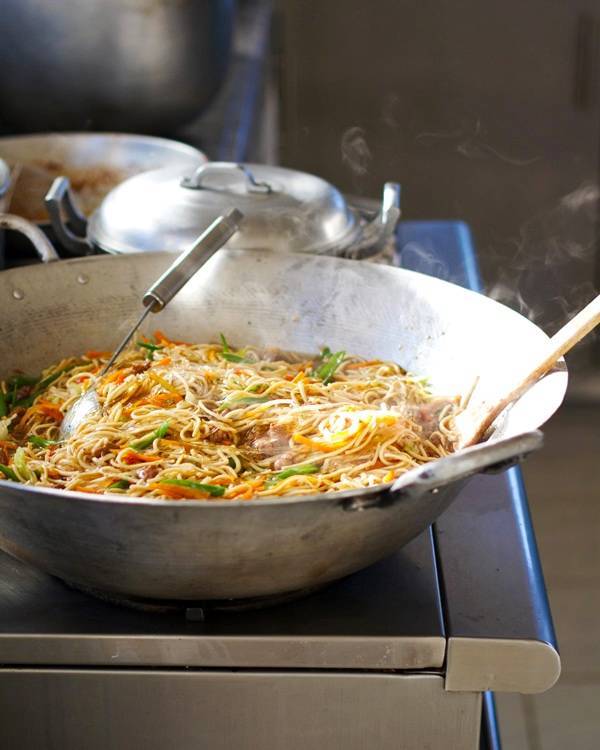Top Picks : Must-Try Filipino Food Recipes.
Authentic Filipino Food Recipes to Try in the house
Checking out genuine Filipino food dishes offers a possibility to value the detailed tastes and social importance behind each meal. From the well-liked Adobo, with its full-flavored marinate, to the tasty Sinigang that embodies the significance of Filipino convenience, these recipes welcome a deeper understanding of traditional cooking methods. Using fresh, regional active ingredients is necessary, as is welcoming common eating-- a hallmark of Filipino culture. As we consider the essential components and methods that define these cooking prizes, one might question what details dishes can truly record the heart of this vivid food.
Popular Filipino Dishes
Filipino food boasts a rich tapestry of tastes and customs, with over a loads legendary meals that highlight the nation's varied cultural influences. Among one of the most well-known recipes is Adobo, a tasty stew typically made with chicken or pork, seasoned in vinegar, soy sauce, garlic, and seasonings. Its zesty flavor account makes it a staple in Filipino homes.
One more cherished meal is Sinigang, a sour soup commonly made with tamarind, tomatoes, and numerous vegetables. This recipe can include pork, shrimp, or fish, and its revitalizing taste is perfect for warm climates. For those with a craving for sweets, Leche Flan-- a luscious sugar custard-- works as a prominent treat, showcasing the Filipino penchant for rich, sweet tastes.
Kare-Kare, a passionate oxtail stew with a thick peanut sauce, together with the iconic lumpia, or springtime rolls, additionally exhibit the variety discovered in Filipino cuisine. Each meal not only uses distinct preferences yet additionally narrates of regional active ingredients and historical impacts, making Filipino food a dynamic reflection of its culture and heritage.
Vital Ingredients for Filipino Food Preparation
The essence of Filipino food preparation hinges on its vital components, which work as the structure for the country's precious meals. A variety of tastes and appearances integrated, showcasing the varied social influences that form Filipino food.
Key ingredients include rice, the staple that accompanies nearly every meal, signifying food and neighborhood. Soy sauce, vinegar, and fish sauce (patis) are critical for flavoring, imparting umami and depth to dishes. Fresh natural herbs like cilantro and basil add aromatic quality, while garlic, onion, and ginger offer a robust taste base.
Protein sources such as pork, hen, and fish and shellfish are main to lots of recipes, often marinaded to boost taste. Veggies like eggplant, bitter melon, and environment-friendly beans add crucial nutrients and equilibrium - Filipino food recipes. Coconut milk is an additional considerable component, providing creaminess and a subtle sweet taste to numerous stews and desserts
Last but not least, calamansi, a citrus fruit, provides a refreshing flavor that boosts meals and beverages alike. Together, these ingredients produce the dynamic and abundant tapestry of flavors that specify Filipino food, making it both comforting and unique. Understanding these fundamentals is crucial for any person aiming to reproduce genuine Filipino recipes in your home.
Step-by-Step Recipe Guide
:max_bytes(150000):strip_icc()/Beef-Stir-Fry-with-Snow-Peas-2000-eaa56c8a960f447c816c9de642a21c70.jpg)
Start by preparing your ingredients. For Adobo, chop the meat into uniform pieces and season it in soy sauce, vinegar, garlic, and bay leaves for at the very least 30 mins. Next off, warm oil in a frying pan and sauté the garlic and onions till fragrant, then include the marinated meat, allowing it to brown evenly.
For Sinigang, begin by steaming water in a pot and adding your selection of meat. Once tender, integrate tamarind paste or fresh tamarind for that trademark sour taste. Adhere to with veggies like radish and kangkong, food preparation up until just tender.

Tips for Authentic Taste
Frequently, accomplishing genuine taste in Filipino recipes rests on the cautious option and therapy of components. Beginning with fresh, top notch produce, as the vibrancy of vegetables and herbs significantly improves the dish's overall taste. Staples like garlic, onions, and ginger form the aromatic foundation for numerous dishes; utilizing them in proper proportions is crucial.
Picking the right healthy protein is similarly crucial. Typical adobo commonly utilizes hen or pork, marinaded to absorb the marinate's full taste. Furthermore, take into consideration sourcing in your area produced or regional components, as they can supply authenticity that store-bought choices lack.
Cooking methods also play a vital role. Slow-cooking methods, such as braising or stewing, enable tastes to meld wonderfully, while frying can add an enjoyable texture. Don't ignore flavoring; utilizing salt, fish sauce, or soy sauce at the ideal minutes can elevate a meal considerably.
Offering and Appreciating Filipino Food
Cooking experiences are enriched when Filipino food is offered with attention to custom and community. The method of sharing dishes is read the full info here main to Filipino society, signifying unity and hospitality. When offering Filipino meals, take into consideration using typical serveware, such as clay pots or bamboo baskets, which enhance the authenticity of the experience.
Usually, Filipino dishes are taken pleasure in family-style, with a variety of dishes put at the center of the table. This common approach encourages communication and enables visitors to example various tastes. A well-curated spread may include staples like adobo, sinigang, and lumpia, matched by rice, which is a basic component of every dish.
Going along with the food with standard dressings, such as soy sauce, vinegar, or chili paste, can raise the dining experience, inviting diners to customize their plates to their choices. Additionally, including regional drinks, like calamansi juice or tuba, can enhance the total flavor profile.
Final Thought
